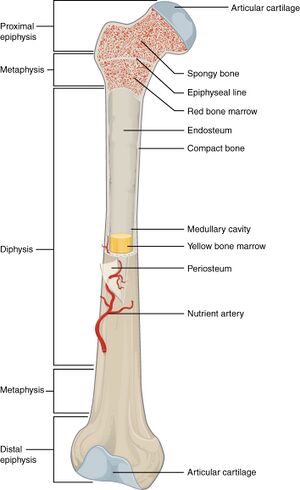Developing Physically Active and Sporty Kids - Injuries Specific to Children and Teenagers
Top Contributors - Jess Bell, Naomi O'Reilly, Kim Jackson, Wanda van Niekerk, Lucinda hampton and Aminat Abolade
Introduction[edit | edit source]
While physical activity levels are, in general, declining in children,[1] there are still large numbers of children and teenagers who participate in organised sports.[2] And, as is discussed here, participation in formal sports can lead to injuries and burnout. Thus, when working with children and adolescents, it is important to consider how children’s injuries are different to those seen in adults.
Before looking at common injuries in children, this page will introduce some basic measures to assess when working with young people.
Know Your Child’s Age[edit | edit source]
There are a number of other ages which must be considered when working with children, including their:[3]
- Developmental age
- Skeletal age
- General training age
- Sport-specific training age
- Relative age
It is also useful to monitor a child’s growth. This might include regular (e.g. quarterly) height measurements in standing, crook sitting and arm span. This monitoring can help to identify peak velocity height (i.e. the time when the child is growing the quickest), which is relevant for certain conditions discussed below. Table 1 shows typical growth per year.[3]
| Age | 6 | 7 | 8 | 9 | 10 | 11 | 12 | 13 | 14 | 15 | 16 | 17 | 18 | 19 | 20 |
|---|---|---|---|---|---|---|---|---|---|---|---|---|---|---|---|
| Height | 5 | 4.8 | 5 | 4.8 | 5 | 4.8 | 8.6 | 12 | 7.7 | 3.3 | 2.3 | 1.9 | 1.3 | 0.9 | 0.5 |
Typical Types of Injuries in Children[3][edit | edit source]
- Weak attachment site (which can lead to avulsion fractures)
- Mismatch between bone growth and muscle growth, which can result in uncoordinated movements and lead to fracture
- Weaker site at physis, can lead to fracture[4]
- Greenstick fracture (elastic long bone)
- Premature growth plate fracture = stress fracture[3]
References[edit | edit source]
- ↑ Frömel K, Groffik D, Mitáš J, Madarasová Gecková A, Csányi T. Physical activity recommendations for segments of school days in adolescents: support for health behavior in secondary schools. Front Public Health. 2020;8:527442.
- ↑ Safe Kids Worldwide. Preventing sports-related injuries. Available from: https://www.safekids.org/preventing-sports-related-injuries (accessed 7 November 2021).
- ↑ 3.0 3.1 3.2 3.3 3.4 Prowse T. Developing Physically Active and Sporty Kids - Injuries in Teens and Children Course. Physioplus, 2021.
- ↑ Patel DR, Yamasaki A, Brown K. Epidemiology of sports-related musculoskeletal injuries in young athletes in United States. Transl Pediatr. 2017;6(3):160-6.







